QuestionI am helping my 8 year old with his first tank. We have a 10 gallon tank, hang on filter, set up 12/25/08, first fish added 12/26/08 (don't yell at me please, we didn't know any better!). Just for the sake of history...initially put in 4 male guppies and 3 dwarf African frogs (keep in mind our advice has been coming from Petsmart and Petco employees, which we have come to learn can be very hit or miss in accuracy). All the frogs died within 24 hours. Within a week, all of the guppies had died. Got 2 more guppies and one of them died. Through all of this...pH 7.8 (that is the pH of my tap water), chlorine 0, nitrites 0, nitrates 0, ammonia 0, temp 78. No one at Petsmart could figure this out. Guy at Petco tells me it is the poor quality of Petsmart fish....who knows!
So now to my current issue. Had one male guppy in this 10 gallon tank. Jan. 17 in the morning, I vacuumed the gravel, did a 20% water change. That afternoon, we bought a pregnant female. I checked the water before beginning the acclimation process for her and I had a slight ammonia spike and a nitrite spike either from cleaning or cycling, not sure (ammonia was less than .5, nitrite was 1.0 and nitrate was 0). I did a 30% water change, then proceeded to acclimate the female. Added her without issue. I also added an air stone/air pump to the tank. I put in a tank separator to keep male and female apart. On Sunday, Jan. 18, mama had 14 fry. All are still doing well. Following the advice I have read online, we have been feeding the fry tiny amounts 4 times a day. Well, obviously we are over feeding because today I had a nitrite spike to 3.0 (ammonia .25, nitrate 0). I have done two 20% water changes (one very early this morning and one just now). After the second change my ammonia was 0 (I am now out of testing strips so I don't know what my nitrite level came down to).
So, how to proceed from here? I will, of course, get more testing strips. Do I just keep doing the 10-20% water changes until the cycle completes? I know 16 fish will be too many for this tank if all the fry live. I will deal with that when they are bigger and I can determine their gender. Short term, I need to know the best way to keep my fry healthy while my tank goes through its first cycle.
If only I had known all this stuff about cycling BEFORE Santa brought the tank! Petsmart didn't tell Santa ANYTHING about cycling and such, we learned it online when our fish died and we bought testing strips to see why. Thanks for your help!
AnswerHi Rene,
You know by now that it's definitely not recommended or safe for any fish to be in a cycling tank so I'll spare you the soap box.
It's also true that you should rarely take pet shop advice, especially from large chains because they are under-informed, young, take guesses or all out don't care. They are in this for profit and not for the well being of the fish. The mom and pop owned shops I find are the best because they truly care about your fish and have usually been in the business for years.
It's also true that even if your tank was established that you added too many fish at once. Even in an established tank you should add slowly, 1-2 fish, let the filter adjust to the new bioload, wait a week and add 1-2 more fish. Repeat until stocked. Even in an established tank dumping too many fish in at once will overload and short circuit the cycle and cause an ammonia/nitrite spike, which as you've found is deadly and dumping this many into a cycling tank is well, disastrous.
And it's definitely not the quality of fish. While I would never condone buying fish from Walmart and I say professional breeders are the best fish produced (but no one usually buys guppies from professionals) there is nothing wrong with buying fish from Petco or Petsmart if you know what to look for. There are tricks to making sure you get better fish from these stores:
-Find out what days they get new shipments. If it's a Friday, go on Thursday because you know what is in the tank has survived at least a week. You never want to buy fish that just came in. They have already been handled a lot and the stress of one more move alone could kill them.
-Do not buy fish that even look healthy to you if they are in a tank with fish that you can tell are clearly ill or with dead fish in the tank. Never a good sign.
-Do not buy fish whose fins are clamped close to their body and have the 'shimmy' effect. This is basically where they are hovering near the water's surface with their fins closed, shaking back and forth to stay up. This is a severely stressed fish.
-Choose fish who look active, eyes are clear, skin is clear and bright and free from defects. They should always make a mad dash to get away from being netted. This is a healthy fish!
African dwarf frogs do not do well even in a newly, fully cycled tank. I have always have better luck with them in an at least 6 month + established tank. They do not seem to favor the 'new' water, even if the tank has just recently cycled and they certainly will not tolerate the actual cycling process. If you want to add these I would wait many, many months and you'll have better results.
That being said, STOP immediately adding fish to a cycling tank. I know you know now that you should've cycled the tank first but it's not helping to continually add new fish. The cycling process will take longer and you are putting these fish at a huge risk here. You are still having ammonia and nitrite spike not only from adding new fish but because your tank has not completed the cycling process. This can take 8-12 weeks! Further disheartening is the fact that you have absolutely 0 nitrates, this means that you are only 1/3 to 2/3 of the way there to being completely cycled. Waste converts to ammonia that converts to nitrite and finally to nitrate. Ammonia and nitrite are highly toxic and lethal to the fish, and should always be flat 0. Nitrates should always be present in a healthy tank, from 5-20 ppm. The fact that you have none means that your nitrites are not converting yet.
The fry may not/probably won't make it. Fry need PERFECT water quality to survive and any ammonia and nitrites will kill an adult fish, let alone fragile babies. Plus, you should be feeding them 4-6 times a day, but only about the size of 2 fish eyeballs of food per baby fry so you could be dumping too much food in there. And you're right that it's making your cycling tank problems worse. You can try separating them into their own tank. Even a cheap, clear, plastic rubbermaid container of 20 gallons with an undergravel or sponge filter would work and a small heater. You could get this set up for very inexpensive at a Walmart. Use 1 tsp. per gallon of aquarium salt to reduce stress. Double dose a product called Seachem's Prime and don't use anything else other than the Prime. The Prime is a water conditioner and toxin remover. Change out 25% of the water every other day since the rubbermaid also is not cycled and from the excess feedings, double dosing the Prime and salt in the new water.
As for your main tank, you are doing far too many water changes and gravel cleanings. Overcleaning will slow down the process because you are removing beneficial bacteria each time you do this and are probably taking out too much. Do 25% water changes every other day and again, double dose the Prime as long as you have ammonia and nitrite present. Add the 1 tsp. per 5 gallons of aquarium salt. Only feed every 2-3 days as this will help preserve quality. Clean gravel once a week. It's going to take awhile but you'll get there.
DO NOT BUY TESTING STRIPS. Break down and buy the API Freshwater Master Test liquid drop kit. It's $30 but it will last you for about two years. Strips are horribly inaccurate and even the instructions enclosed with the strips will tell you for best results to use a liquid drop test kit. They are so much more accurate and easy to use as well and you will have a better handle on where you stand with your water parameters.
If you have a filter with disposable cartridges you are also tossing out beneficial bacteria each time you put in a new cartridge. I would add a Hagen BioMax insert (looks like a mesh bag with white cylinder rocks) to your filter. This will host the beneficial bacteria and when you change out cartridges you keep this in there so that you still have plenty of beneficial bacteria stored. Never throw it out and never rinse it in tap water (or anything else for your tank). Tap water destroys beneficial bacteria. To clean the biomax insert you simply rinse in tank water in a bucket when you do your gravel syphoning and put back.
Good luck : ) April M.

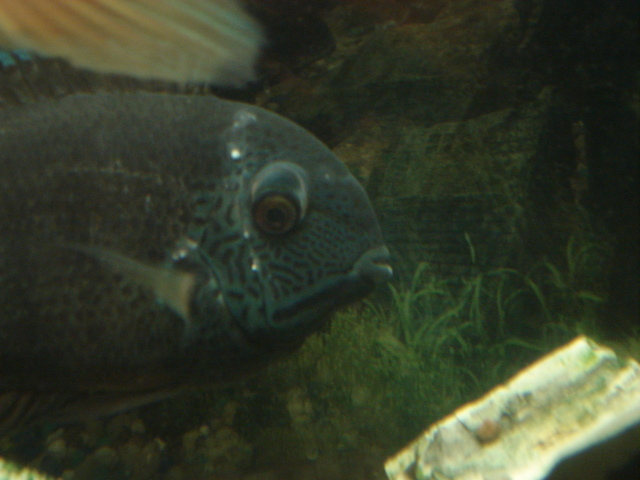 Sick Severum Cichlid
QuestionSick Severum
QUESTION: Hi, I hope you ca
Sick Severum Cichlid
QuestionSick Severum
QUESTION: Hi, I hope you ca
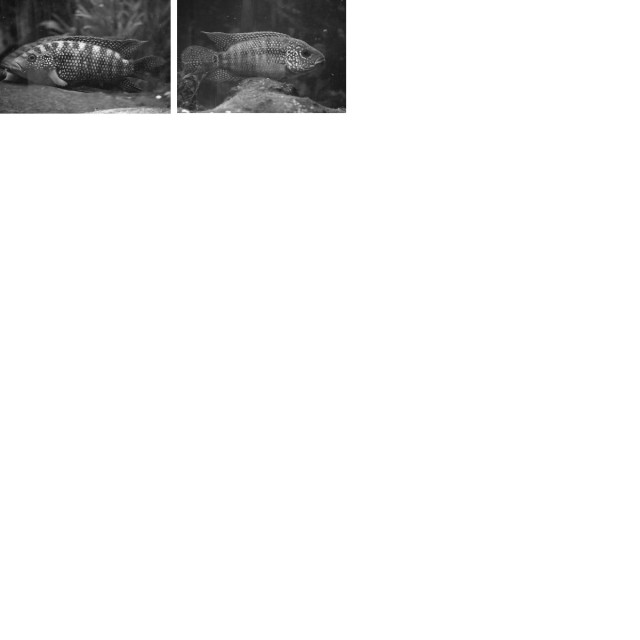 sexing of fish
QuestionQUESTION: i have 3 jack dempsy how can i sex th
sexing of fish
QuestionQUESTION: i have 3 jack dempsy how can i sex th
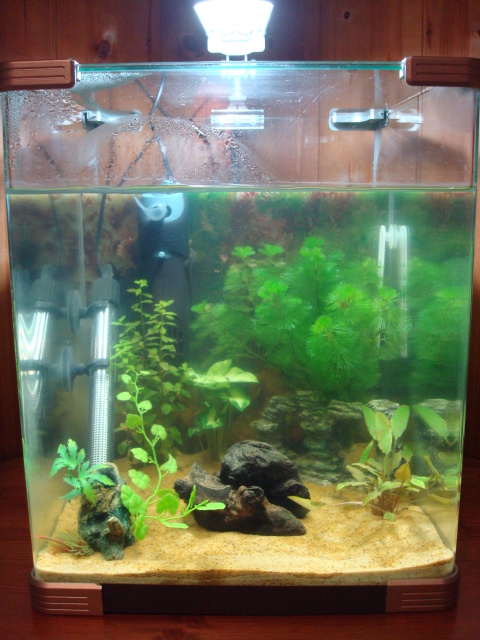 High Nitrite Level
QuestionQUESTION: Hi Renee
Approximately 3 weeks ago I
High Nitrite Level
QuestionQUESTION: Hi Renee
Approximately 3 weeks ago I
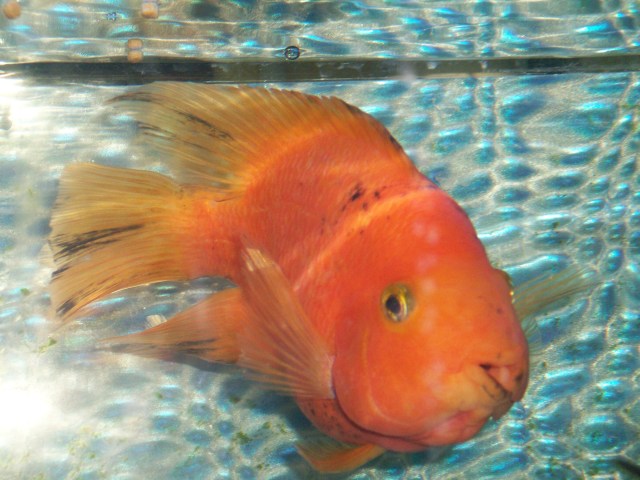 parrot ciclids
QuestionQUESTION: I have a 65 gal tank with 2 orange pa
parrot ciclids
QuestionQUESTION: I have a 65 gal tank with 2 orange pa
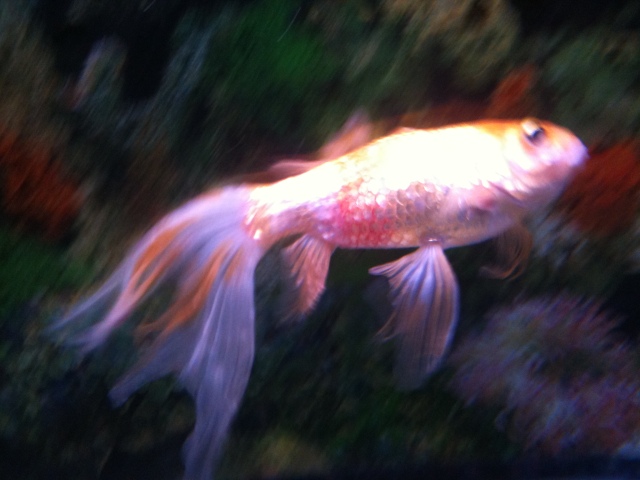 Gold fish Symptons
Question
Goldfish
I have a goldfish that is 20 years ol
Gold fish Symptons
Question
Goldfish
I have a goldfish that is 20 years ol